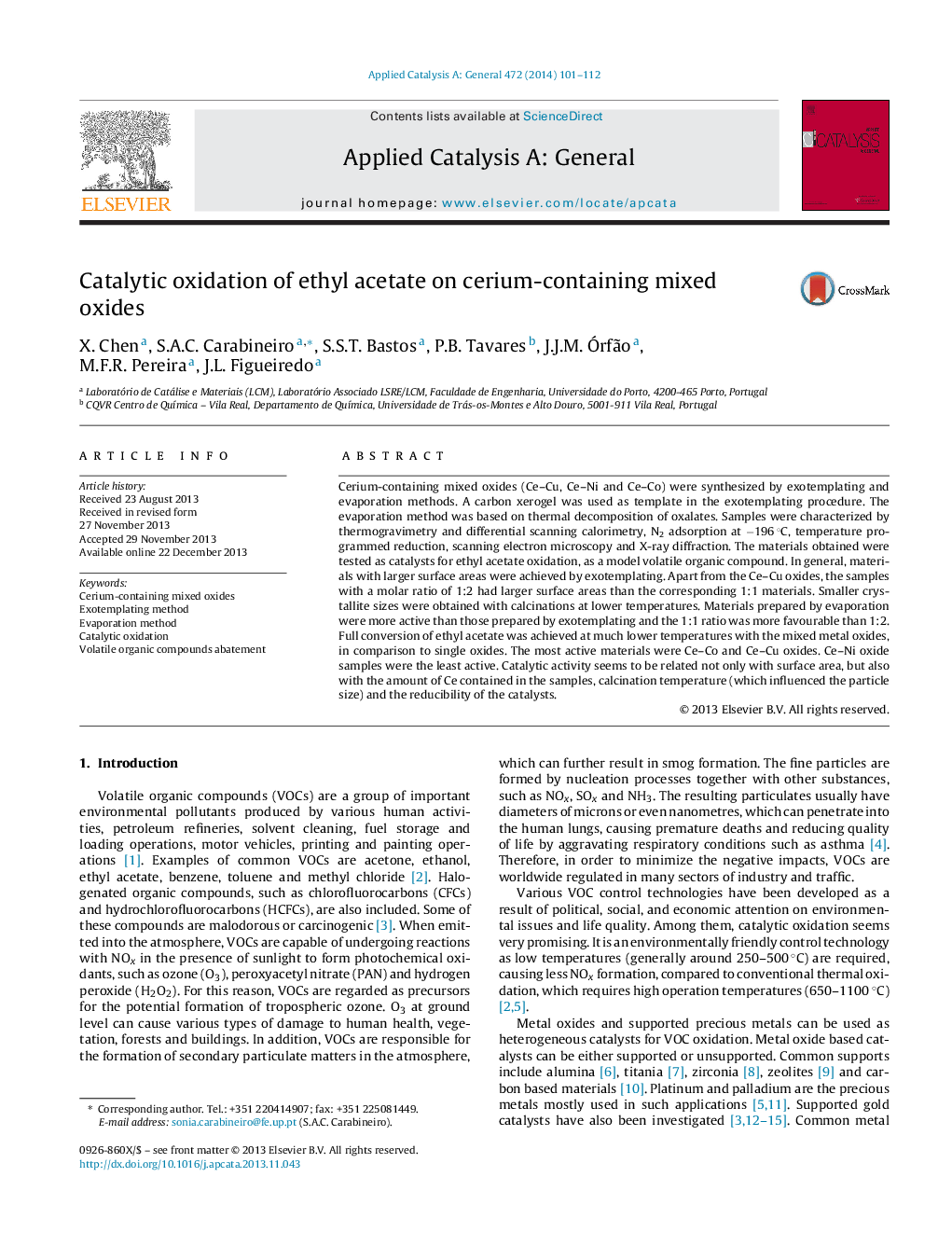| کد مقاله | کد نشریه | سال انتشار | مقاله انگلیسی | نسخه تمام متن |
|---|---|---|---|---|
| 39794 | 45836 | 2014 | 12 صفحه PDF | دانلود رایگان |
• Ce–Cu, Ce–Ni and Ce–Co oxides were prepared by exotemplating and evaporation methods.
• The materials obtained were tested as catalysts for ethyl acetate oxidation to CO2.
• Samples prepared by evaporation were more active than those prepared by exotemplating.
• Catalytic activity depends on the amount of Ce, calcination temperature and sample reducibility.
• The most active samples were Ce–Co and Ce–Cu oxides while Ce–Ni were the least active.
Cerium-containing mixed oxides (Ce–Cu, Ce–Ni and Ce–Co) were synthesized by exotemplating and evaporation methods. A carbon xerogel was used as template in the exotemplating procedure. The evaporation method was based on thermal decomposition of oxalates. Samples were characterized by thermogravimetry and differential scanning calorimetry, N2 adsorption at −196 °C, temperature programmed reduction, scanning electron microscopy and X-ray diffraction. The materials obtained were tested as catalysts for ethyl acetate oxidation, as a model volatile organic compound. In general, materials with larger surface areas were achieved by exotemplating. Apart from the Ce–Cu oxides, the samples with a molar ratio of 1:2 had larger surface areas than the corresponding 1:1 materials. Smaller crystallite sizes were obtained with calcinations at lower temperatures. Materials prepared by evaporation were more active than those prepared by exotemplating and the 1:1 ratio was more favourable than 1:2. Full conversion of ethyl acetate was achieved at much lower temperatures with the mixed metal oxides, in comparison to single oxides. The most active materials were Ce–Co and Ce–Cu oxides. Ce–Ni oxide samples were the least active. Catalytic activity seems to be related not only with surface area, but also with the amount of Ce contained in the samples, calcination temperature (which influenced the particle size) and the reducibility of the catalysts.
Figure optionsDownload high-quality image (303 K)Download as PowerPoint slide
Journal: Applied Catalysis A: General - Volume 472, 22 February 2014, Pages 101–112
